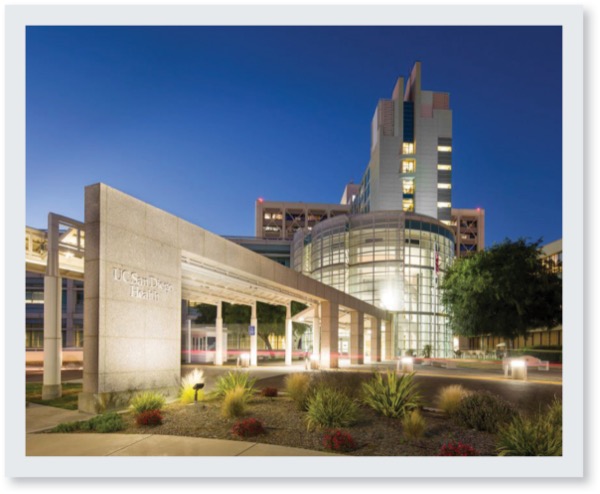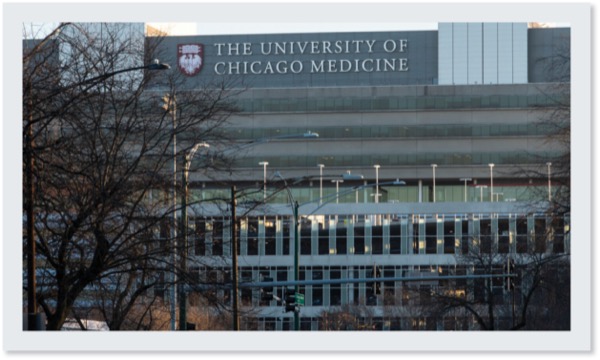As of 2024, ASHP has designated six institutions as Certified Centers of Excellence in Medication-Use Safety and Pharmacy Practice, following a rigorous certification process that ranges from 12 to 24 months. Certification lasts for three years.
The program began in 2021 and includes review of an organization’s medication safety documents and procedures and a multiday site visit. Areas of focus include the pharmacy’s visibility within its health system, quality improvement efforts and medication safety practices.
Certification recipients spoke about their experience during a town hall session at the ASHP Midyear 2024 Clinical Meeting & Exhibition, in New Orleans.
“Before this program, there was no comprehensive certification or accreditation standard, based upon best practices, that organizations could use to measure their own programs and services,” said David Warner, PharmD, ASHP’s senior director of Consulting and Practice Development.
The Center of Excellence program is similar to Magnet certification for nursing, and its developers view the program as a potential recruitment tool for participating health systems (Am J Health Syst Pharm 2024;81[9]:e208-e209).
“The desire for this certification came from the membership,” noted Dr. Warner, who hopes that the town hall inspires additional organizations to pursue certification.
UCSDH: A Culture of Continuous Improvement
“Our organization values external validation of our work. We’re in the habit of asking if there’s a standard that we can measure ourselves against,” said Charles E. Daniels, BSPharm, PhD, the chief pharmacy officer at UC San Diego Health (UCSDH).
The health system was the first ASHP-designated Center of Excellence, in February 2022, and pharmacy staff are preparing for a renewed certification site visit later this year. The designation applies to all UCSDH hospitals that were part of the health system in 2022, along with facilities such as infusion centers and specialty pharmacies.
“I wanted to find something that our entire department could participate in; it’s big enough that it requires everybody to be on board,” said Dr. Daniels, unlike recognition programs focused on smaller units or individuals.
Pharmacy leaders have discussed benchmarking hospital pharmacy programs against national standards throughout his 40-year career, Dr. Daniels noted. The effort usually runs aground because hospitals serve such disparate patient populations that it’s difficult to compare services objectively using metrics that everyone supports. In Dr. Daniels’s view, ASHP’s certification program finally solves this challenge.
During the certification process, surveyors offered UCSDH several suggestions for improvement. For example, “ASHP recommended that we find additional ways to communicate across the department, and we’ve done that,” Dr. Daniels said. Prior to this push, pharmacy technicians and staff knew what was happening where they worked, he recalled, but not necessarily about new specialty pharmacy offerings or initiatives in inpatient pharmacy, or elsewhere. ASHP also recommended that UCSDH expand the size of the pharmacy that provides medications upon discharge from the cancer center, given the large number of patients served. This finding galvanized concrete action.
“I will be happy to report, when the surveyors return this year, that we have expanded the size of the retail pharmacy in our cancer center,” Dr. Daniels said.
ASHP lauded UCSDH’s commitment to providing patients who need specialty medications with a transition of care plan from the hospital to ambulatory setting, as well as generally ensuring that patients at risk for readmission have all needed medications at discharge. Just giving someone a prescription list could present hurdles if they try to fill the prescription only to discover then that it needs a prior authorization, Dr. Daniels said; UCSDH strives to get prior approvals before discharge.
“About 85% of our patients have all meds at hand at discharge, which is the highest number I’ve heard of,” he said.
Legacy Salmon Creek: A Small Hospital Tells Its Certification Story
“We were approached by ASHP to be the first small hospital to apply for certification,” said Kate Farthing, PharmD, BCPS, FASHP, the pharmacy manager at Legacy Salmon Creek Medical Center, in Vancouver, Wash.
Legacy Salmon Creek is a community hospital with 220 beds, Dr. Farthing said, and one of six community hospitals in the Legacy Health system. Legacy Salmon Creek became a Center of Excellence in January 2023.
ASHP used this experience to test whether the Center of Excellence Program is viable for hospitals of different sizes, Dr. Farthing recalled. But this was not the only reason ASHP reached out. “It’s a unique hospital that really does take the concept of excellence and quality very seriously,” said Dr. Farthing, adding that ASHP’s certification process gave hospital pharmacy leaders a chance to measure their performance against national standards.
The certification journey validated that Legacy Salmon Creek had developed robust practices for comprehensive medication management (CMM): a full gamut of tasks ranging from ordering labs at appropriate intervals to providing patient counseling about safe use of high-risk drugs. One particular strength of Legacy Salmon Creek’s CMM strategy, which came to the fore during the certification process, are well-honed structures that enable daily oversight of the medication needs of every patient.
“We are able to literally see or to evaluate the profile for almost every patient every day. I do believe the surveyors and ASHP appreciated seeing our structure and approach to clinical pharmacy services,” Dr. Farthing said, adding that those services are applied to an average of 215 to 229 patients per day.
The Legacy Salmon Creek practice model included making modifications to its electronic medical records system to facilitate regular pharmacist oversight. Dr. Farthing added that ASHP surveyors encouraged the hospital’s pharmacy leaders to apply for an award to recognize its CMM practices.
“We can always do better at telling our story,” which he said was one area for improvement that ASHP surveyors noted. “We’ve always had quality initiatives, but how do you actually show where pharmacy is involved in the broader clinical and quality programs the hospital offers?”
For example, pharmacists have long advised nurses about how to respond when they scan a barcode to administer a medication at bedside, but the scan fails. At that point, a troubleshooting algorithm ensues; maybe it’s a broken scanner or an illegible barcode, for example. Thanks to pharmacy leadership, nurses know what to do in each situation. This type of labor, long hidden, is becoming better known at Legacy Salmon Creek.
UCM Turns Opportunities Into Priorities
The true value of pursuing ASHP’s Center of Excellence Program “is in demonstrating our commitment to continuous quality improvement,” noted Charlene Hope, PharmD, MS, CPPS, University of Chicago Medicine’s (UCM) chief pharmacy quality and medication safety officer.
For example, ASHP’s Center of Excellence process revealed the opportunity for UCM to design better workflows within its central pharmacy. The pharmacy is landlocked and bounded within a larger building, with no room to expand. The pharmacy executive director partnered with the hospital’s facilities department to reconfigure the current space to improve the work environment for pharmacy staff focused on safe and efficient drug handling.
“The certification process embeds improvements like these into the pharmacy strategic plan,” Dr. Hope said. Otherwise, the daily work of operating a busy inpatient pharmacy department often takes priority over working on initiatives like how to optimize a workspace, she noted. Pursuing the Center of Excellence designation “also helped us rethink how to use this space not only from a safety perspective but also creating a work environment that is comfortable for pharmacy staff to work efficiently in.”
UCM earned the ASHP designation in 2022 and has applied for renewed certification. Although UCM is a large system, with more than 1,000 beds across all facilities, Dr. Hope said she believes the program can benefit organizations of any size.
“I would encourage smaller hospitals to go through the [certification],” Dr. Hope stressed, adding that ASHP scales its certification requirements to the size of the health system. A community hospital with 50 beds is not evaluated the same way as UCM, and in Dr. Hope’s view the certification program supports quality improvement efforts in facilities of any size.
“This is an all-hands-on-deck process,” Dr. Hope emphasized. It won’t work, she noted, if the lone pharmacy director or medication safety officer attempts to gather all the information on their own without engaging their pharmacy team, including pharmacy technicians, clinical pharmacists and fellow leaders.
As for the tracer sessions that ASHP employs to assess Center of Excellence status, “I was really thrilled by the response of our front-line staff” during the sessions, Dr. Hope noted—particularly when the ASHP on-site surveyors asked about how UCM supports employee resilience and well-being.
“Staff members were eager to answer the surveyor questions,” Dr. Hope said. “There was no need to tease out their replies. This showed true buy-in.”
Saint Luke’s Focuses on Medication Safety
“Saint Luke’s Hospital of Kansas City has a history of participating in quality improvement organizations,” said Greg Teale, PharmD, BCPS, the vice president of pharmacy services for Saint Luke’s (BJC West Region), in Kansas City, Mo. This includes earning the Malcolm Baldrige National Quality Award in 2003, and ongoing certification as a Magnet hospital for nursing excellence since 2004.
“We knew we did a lot of really good things in the pharmacy as well,” Dr. Teale said, particularly around medication safety. He cited, as an example, leveraging technology in the hospital’s sterile compounding suites, expanding pharmacist review of orders into procedural areas and collaborating with the medical staff to develop several pharmacy practice agreements.
ASHP’s Center of Excellence designation recognizes Saint Luke’s commitment to medication safety, as shown in detailed processes like these, he added.
Gathering all the documents needed and preparing for the ASHP surveyor site visit is a significant undertaking, Dr. Teale noted. That said, Saint Luke’s is also an ASHP-accredited site for pharmacy residencies, and the pharmacy team plans to use documentation collected during the certification process during the next residency evaluation.
Prior to applying to become a Center of Excellence, Saint Luke’s pharmacy staff were apt to keep the results of quality improvement initiatives in-house. People within the pharmacy knew about these efforts, Dr. Teale said, whereas colleagues in other departments, including those responsible for quality improvement, were less aware of them. One example he cited was a program focused on improving the safety of heparin infusions. This was done, he said, via an interdisciplinary team who reviewed data and made changes to processes to reduce the potential risk of harm.
Although the Center of Excellence designation validates Saint Luke’s efforts, Dr. Teale is not sure whether it is a potent recruiting tool. The ASHP program is new, unlike the established Magnet program that is sometimes used during recruitment; for now the ASHP program is not part of the pharmacy recruiting conversation, Dr. Teale said. This could change.
“We’re graduating far fewer pharmacy students than we used to, just as many pharmacists are starting to retire,” Dr. Teale said. This looming staff shortage will inevitably find organizations competing for scarce talent. In that reality, Dr. Teale said, organizations that are Centers of Excellence may have an advantage when seeking pharmacists focused on medication safety.
This article is from the March 2025 print issue.





